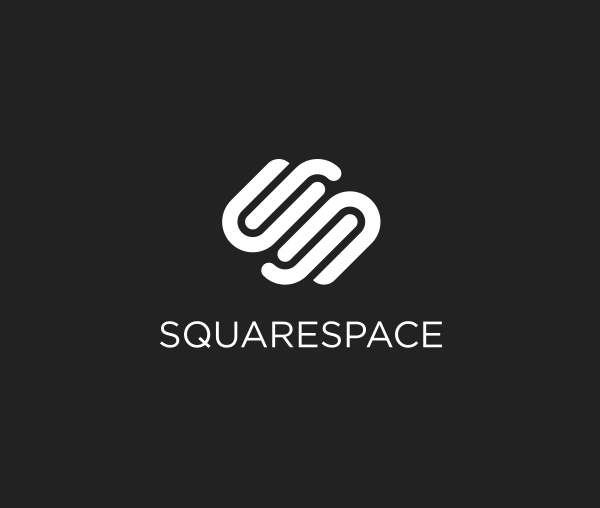Update #2 (7/20/15): Price at $999 - Preorder now from B&H Canon Mount | Nikon Mount | Sigma MountUpdate: The lens is now official - Expected arrival at the end of July. No word on price - I suspect it will be under $1000. My comment about the 18-35 ART lens - "it's like carrying around a bag of primes" also applies to this lens and Sigma has actually said something similar "It covers three of the most commonly used prime lenses, 24mm, 28mm and 35mm all in one lens. "- I think they watched my video ;)Listings are now live on B&H Photo but incredibly thin on details we care about - Price and a firm ship date.Will you be ordering?Sigma 24-35 f/2 Canon Mount | Nikon Mount | Sigma MountBased on comments you left on the Facebook post - interest is mixed, many of you feel similar to me, the range here is just short enough to be a little less exciting- though the sharpness and the fact that you get f/2 will be lovely.Original Post:We are a huge fan of the ART series lenses. Every lens I have tried has been exceptionally sharp with top-notch build quality. See what's in our bag for the Sigma lenses we use daily.The next lens Sigma will be announcing is the 24-35 f/2 and to be honest this has me scratching my head. Sure f/2 in a zoom lens is quite amazing, similar to the amazing Sigma 18-35 f/1.8 for crop sensors but that range is awfully short.Are you interested? How would you use? I would be more interested if they could get the range closer to 50, so a 24-50 f/2 would be sweet but ending at 35mm feels a bit limiting.
 Photos courtesy of digicame-info.comThanks Knut Aage Dahl for alerting me to the info.Full Press Release from SigmaThe Sigma Corporation is pleased to announce that we are going to introduce the SIGMA 24-35mm F2 DG HSM | Art, the world's first*1 large-aperture full-frame wide-angle zoom lens offering F2 brightness throughout the zoom range.While offering the premier optics of the Art line, this lens covers 24mm, 28mm and 35mm focal lengths. Incredible performance overturns the conventional perception of a zoom lens.SIGMA was determined to create a zoom lens that offers the same brightness and resolution as a fixed focal length lens: in other words, the highest level of optical performance. The result of this challenge was the SIGMA 18-35mm F1.8 DC HSM | Art, the world’s first zoom to offer a fast F1.8 aperture value throughout the zoom range. Building on this concept, SIGMA has developed the new SIGMA 24-35mm F2 DG HSM | Art for 35mm full frame sensor. It allows photographers to carry one lens to do the work of three fixed focal length lenses, a 24mm, 28mm and 35mm — with F2 brightness and top optical performance. One package delivers flexible functionality and high convenience. In particular, at the 24mm and 35mm focal lengths, this lens offers the performance that is equivalent to that of two prime lenses in the Art line. Instead of changing one high-performance fixed focal length lens for another, simply zoom. This is a new zoom lens for 35mm full frame sensor SLRs that offers the quality of a fixed focal length lens at various angles of view.Key features1. The world’s first large-aperture full-frame zoom lens offering a wide open aperture of F2 throughout the zoom rangeA large-diameter zoom lens covering the full frame image sensor. Optical performance equivalent to a fixed focal length lens throughout the entire zoom range. These are the concepts the SIGMA 24-35mm F2 DG HSM embodies. It covers three of the most commonly used prime lenses, 24mm, 28mm and 35mm all in one lens. In order to achieve an attractive bokeh effect at wide aperture, we have developed the world's first zoom lens for the 35mm full frame sensor with an F2 aperture value throughout the zoom range*1.2. Outstanding optical performance of the fixed focal length lenses in SIGMA’s Art lineThe SIGMA 24-35mm F2 DG HSM builds on the concept of the SIGMA 18-35mm F1.8 DC HSM | Art, the world’s first zoom lens to offer F1.8 brightness throughout the zoom range. Thanks to the outstanding optical performance, the lens provides the quality of high performance fixed focal length lenses in the Art line.3. Covering the range of three fixed focal length wide-angle lensesDelivering excellent functionality and convenience, one lens offers the equivalent quality of three high-performance fixed focal length lenses at F2 brightness: 24mm, 28mm and 35mm. With a minimum focusing distance of 28cm and a maximum magnification ratio of 1:4.4, this lens is suitable for close-up shooting, portraits with an attractive bokeh and deep-focus landscape photography. Photographers have access to the angle of view equivalent to that of three wide-angle lenses without having to switch them. While achieving the desired background effect can be difficult with a conventional wide-angle lens, the large diameter of this lens allows photographers to open the aperture wide and use the shallow focus to achieve stunning results.4. Incorporating SIGMA’s latest technologiesTo realize a large-diameter zoom lens for full frame cameras with F2 brightness, SIGMA designed each and every part with uncompromising care and quality. The lens incorporates large-diameter aspherical lens elements, which require advanced technologies to manufacture, one FLD (“F” Low Dispersion)*2 glass and seven SLD (Special Low Dispersion) glass elements, of which two are aspherical lenses. The advanced optics and optimized lens power distribution minimize spherical aberration, axial chromatic aberration and field curvature, resulting in outstanding optical performance. Even at widest aperture, this lens delivers breathtaking image quality.5. Convenient handlingThe inner focusing system eliminates front lens rotation, enhancing the lens' stability and allowing use of Circular Polarizing filters. This specification is particularly convenient for shooting video.Other featuresMinimum focusing distance of 28cmWith a minimum focusing distance of 28cm and a maximum magnification ratio of 1:4.4, this lens is excellent for close-up photography.Designed to minimize flare and ghostingFrom an early stage in the lens design process, flare and ghosting have been measured to establish an optical design resistant to strong incident light sources such as backlighting. The Super Multi-Layer Coating reduces flare and ghosting and provides sharp and high contrast images even in backlit conditions. The included lens hood can be attached to block out extraneous light, which can have a negative effect on rendering performance.Hyper Sonic Motor ensures High AF SpeedThe HSM (Hyper Sonic Motor) ensures a silent, high-speed AF function. By optimizing the AF algorithm, smoother AF is achieved. Also, this lens offers full-time MF by rotating the focus ring of the lens while auto focusing*3. Without changing the AF/MF Focus Mode Switch, it allows faster focus adjustment.Rounded DiaphragmThe 9 blade-rounded diaphragm creates an attractive blur to the out-of-focus areas of the image.Brass bayonet mountThis lens incorporates a brass bayonet mount which has both high accuracy and durability. A special treatment to reinforce its strength is applied to the surface giving it greater strength and making it highly resistant to long-term use.Applicable for the Mount Conversion ServiceAs an experienced lens manufacturer that has been creating a diverse range of interchangeable lenses, we have started the innovative "Mount Conversion Service*4". With this chargeable service, the mount of your current SIGMA lenses can be changed to another mount of your choice. It gives new life to your favorite lenses when you wish to use them on a different camera body.Art line delivers high-level artistic expressionSIGMA is organizing all its interchangeable lenses into three product lines; Contemporary, Art, and Sports, where each line has a distinctive concept. Designed with a focus on sophisticated optical performance and abundant expressive power, our Art line delivers high-level artistic expression. With the astonishing rendering performance that meets the highest standard, along with landscapes, portraits, still-lifes, close-ups, and general snaps, they are perfect for the kind of photography that unleashes the inner artist. Ideal for studio photography, they offer just as much expressive scope when capturing architecture and starry skies and many other scenes.Customization and flexible adjustment for convenience or a specific purpose is possible. SIGMA USB DOCK that is designed exclusively for the new lens line-ups.With the optional SIGMA USB DOCK, you can update your lens firmware, adjust focus points and customize Full-time MF function settings as well as the timing to operate the Full-time MF function. By attaching this lens to a SIGMA USB DOCK, which is connected to a computer, the dedicated software "SIGMA Optimization Pro" offers various types of customization and adjustment.New product lines from SGV concepts that are setting new benchmarks for image quality.Design ConceptWith the new product lines, supplied hoods incorporate rubber for the connected part. Lens caps and AF/MF switches are also newly designed in order to improve usability. For the internal parts, various metals and a new material called TSC (Thermally Stable Composite)*5, which works well with metal, are located to achieve products with high accuracy. The lens barrel includes the year of release, engraved for users to recognize when the lens was released.Evaluation with SIGMA's own MTF measuring system "A1"We used to measure lens performance with an MTF measuring system using conventional sensors. However, we've now developed our own proprietary MTF (modulation transfer function) measuring system (A1) using 46-megapixel Foveon direct image sensors. Even previously undetectable high-frequency details are now within the scope of our quality control inspections. All SIGMA 24-35mm F2 DG HSM lenses will all be checked using "A1*6" before they are shipped.Made in JapanAll SIGMA's manufacturing – right down to molds and parts – with a few exceptions, are carried out under a single integrated production system, entirely in Japan. We are now one of the very few manufacturers whose products are solely "made in Japan". We like to think our products are somehow imbued with the essence of our homeland, blessed as it is with clean air and water, and focused, hard-working people. We pride ourselves on the authentic quality of SIGMA products, born of a marriage between highly attuned expertise and intelligent, advanced technology. Our sophisticated products have satisfied professionals and lovers of photography all over the world, because our manufacturing is based on genuine craftsmanship, underpinned by the passion and pride of our experts.Footnotes*1 Among interchangeable lenses for 35mm full frame image sensors (June, 2015)*2 FLD glass is the highest level low dispersion glass available with extremely high light transmission. This optical glass has a performance equal to fluorite glass which has a low refractive index and low dispersion compared to current optical glass. It also benefits from high anomalous dispersion. These characteristics give excellent correction for residual chromatic aberration (secondary spectrum) which cannot be corrected by ordinary optical glass and ensures high definition and high contrast images.*3 The default setting of Full-time MF function varies for each mount.*4 This "Mount Conversion Service" is different from a normal repair. In order to apply for the service, please contact your nearest authorized subsidiary / SIGMA distributor.*5 TSC (Thermally Stable Composite) offers thermal expansion characteristics similar to those of aluminum. Parts made with TSC deform less, making possible lens construction of extremely high precision. As compared to polycarbonate containing 20% glass, a commonly used material, TSC offers approximately 70% higher elasticity. As compared to polycarbonate containing 30% glass, it offers 25% higher elasticity. (Comparison is between SIGMA-produced components.)*6 A1:Aizu 1
Photos courtesy of digicame-info.comThanks Knut Aage Dahl for alerting me to the info.Full Press Release from SigmaThe Sigma Corporation is pleased to announce that we are going to introduce the SIGMA 24-35mm F2 DG HSM | Art, the world's first*1 large-aperture full-frame wide-angle zoom lens offering F2 brightness throughout the zoom range.While offering the premier optics of the Art line, this lens covers 24mm, 28mm and 35mm focal lengths. Incredible performance overturns the conventional perception of a zoom lens.SIGMA was determined to create a zoom lens that offers the same brightness and resolution as a fixed focal length lens: in other words, the highest level of optical performance. The result of this challenge was the SIGMA 18-35mm F1.8 DC HSM | Art, the world’s first zoom to offer a fast F1.8 aperture value throughout the zoom range. Building on this concept, SIGMA has developed the new SIGMA 24-35mm F2 DG HSM | Art for 35mm full frame sensor. It allows photographers to carry one lens to do the work of three fixed focal length lenses, a 24mm, 28mm and 35mm — with F2 brightness and top optical performance. One package delivers flexible functionality and high convenience. In particular, at the 24mm and 35mm focal lengths, this lens offers the performance that is equivalent to that of two prime lenses in the Art line. Instead of changing one high-performance fixed focal length lens for another, simply zoom. This is a new zoom lens for 35mm full frame sensor SLRs that offers the quality of a fixed focal length lens at various angles of view.Key features1. The world’s first large-aperture full-frame zoom lens offering a wide open aperture of F2 throughout the zoom rangeA large-diameter zoom lens covering the full frame image sensor. Optical performance equivalent to a fixed focal length lens throughout the entire zoom range. These are the concepts the SIGMA 24-35mm F2 DG HSM embodies. It covers three of the most commonly used prime lenses, 24mm, 28mm and 35mm all in one lens. In order to achieve an attractive bokeh effect at wide aperture, we have developed the world's first zoom lens for the 35mm full frame sensor with an F2 aperture value throughout the zoom range*1.2. Outstanding optical performance of the fixed focal length lenses in SIGMA’s Art lineThe SIGMA 24-35mm F2 DG HSM builds on the concept of the SIGMA 18-35mm F1.8 DC HSM | Art, the world’s first zoom lens to offer F1.8 brightness throughout the zoom range. Thanks to the outstanding optical performance, the lens provides the quality of high performance fixed focal length lenses in the Art line.3. Covering the range of three fixed focal length wide-angle lensesDelivering excellent functionality and convenience, one lens offers the equivalent quality of three high-performance fixed focal length lenses at F2 brightness: 24mm, 28mm and 35mm. With a minimum focusing distance of 28cm and a maximum magnification ratio of 1:4.4, this lens is suitable for close-up shooting, portraits with an attractive bokeh and deep-focus landscape photography. Photographers have access to the angle of view equivalent to that of three wide-angle lenses without having to switch them. While achieving the desired background effect can be difficult with a conventional wide-angle lens, the large diameter of this lens allows photographers to open the aperture wide and use the shallow focus to achieve stunning results.4. Incorporating SIGMA’s latest technologiesTo realize a large-diameter zoom lens for full frame cameras with F2 brightness, SIGMA designed each and every part with uncompromising care and quality. The lens incorporates large-diameter aspherical lens elements, which require advanced technologies to manufacture, one FLD (“F” Low Dispersion)*2 glass and seven SLD (Special Low Dispersion) glass elements, of which two are aspherical lenses. The advanced optics and optimized lens power distribution minimize spherical aberration, axial chromatic aberration and field curvature, resulting in outstanding optical performance. Even at widest aperture, this lens delivers breathtaking image quality.5. Convenient handlingThe inner focusing system eliminates front lens rotation, enhancing the lens' stability and allowing use of Circular Polarizing filters. This specification is particularly convenient for shooting video.Other featuresMinimum focusing distance of 28cmWith a minimum focusing distance of 28cm and a maximum magnification ratio of 1:4.4, this lens is excellent for close-up photography.Designed to minimize flare and ghostingFrom an early stage in the lens design process, flare and ghosting have been measured to establish an optical design resistant to strong incident light sources such as backlighting. The Super Multi-Layer Coating reduces flare and ghosting and provides sharp and high contrast images even in backlit conditions. The included lens hood can be attached to block out extraneous light, which can have a negative effect on rendering performance.Hyper Sonic Motor ensures High AF SpeedThe HSM (Hyper Sonic Motor) ensures a silent, high-speed AF function. By optimizing the AF algorithm, smoother AF is achieved. Also, this lens offers full-time MF by rotating the focus ring of the lens while auto focusing*3. Without changing the AF/MF Focus Mode Switch, it allows faster focus adjustment.Rounded DiaphragmThe 9 blade-rounded diaphragm creates an attractive blur to the out-of-focus areas of the image.Brass bayonet mountThis lens incorporates a brass bayonet mount which has both high accuracy and durability. A special treatment to reinforce its strength is applied to the surface giving it greater strength and making it highly resistant to long-term use.Applicable for the Mount Conversion ServiceAs an experienced lens manufacturer that has been creating a diverse range of interchangeable lenses, we have started the innovative "Mount Conversion Service*4". With this chargeable service, the mount of your current SIGMA lenses can be changed to another mount of your choice. It gives new life to your favorite lenses when you wish to use them on a different camera body.Art line delivers high-level artistic expressionSIGMA is organizing all its interchangeable lenses into three product lines; Contemporary, Art, and Sports, where each line has a distinctive concept. Designed with a focus on sophisticated optical performance and abundant expressive power, our Art line delivers high-level artistic expression. With the astonishing rendering performance that meets the highest standard, along with landscapes, portraits, still-lifes, close-ups, and general snaps, they are perfect for the kind of photography that unleashes the inner artist. Ideal for studio photography, they offer just as much expressive scope when capturing architecture and starry skies and many other scenes.Customization and flexible adjustment for convenience or a specific purpose is possible. SIGMA USB DOCK that is designed exclusively for the new lens line-ups.With the optional SIGMA USB DOCK, you can update your lens firmware, adjust focus points and customize Full-time MF function settings as well as the timing to operate the Full-time MF function. By attaching this lens to a SIGMA USB DOCK, which is connected to a computer, the dedicated software "SIGMA Optimization Pro" offers various types of customization and adjustment.New product lines from SGV concepts that are setting new benchmarks for image quality.Design ConceptWith the new product lines, supplied hoods incorporate rubber for the connected part. Lens caps and AF/MF switches are also newly designed in order to improve usability. For the internal parts, various metals and a new material called TSC (Thermally Stable Composite)*5, which works well with metal, are located to achieve products with high accuracy. The lens barrel includes the year of release, engraved for users to recognize when the lens was released.Evaluation with SIGMA's own MTF measuring system "A1"We used to measure lens performance with an MTF measuring system using conventional sensors. However, we've now developed our own proprietary MTF (modulation transfer function) measuring system (A1) using 46-megapixel Foveon direct image sensors. Even previously undetectable high-frequency details are now within the scope of our quality control inspections. All SIGMA 24-35mm F2 DG HSM lenses will all be checked using "A1*6" before they are shipped.Made in JapanAll SIGMA's manufacturing – right down to molds and parts – with a few exceptions, are carried out under a single integrated production system, entirely in Japan. We are now one of the very few manufacturers whose products are solely "made in Japan". We like to think our products are somehow imbued with the essence of our homeland, blessed as it is with clean air and water, and focused, hard-working people. We pride ourselves on the authentic quality of SIGMA products, born of a marriage between highly attuned expertise and intelligent, advanced technology. Our sophisticated products have satisfied professionals and lovers of photography all over the world, because our manufacturing is based on genuine craftsmanship, underpinned by the passion and pride of our experts.Footnotes*1 Among interchangeable lenses for 35mm full frame image sensors (June, 2015)*2 FLD glass is the highest level low dispersion glass available with extremely high light transmission. This optical glass has a performance equal to fluorite glass which has a low refractive index and low dispersion compared to current optical glass. It also benefits from high anomalous dispersion. These characteristics give excellent correction for residual chromatic aberration (secondary spectrum) which cannot be corrected by ordinary optical glass and ensures high definition and high contrast images.*3 The default setting of Full-time MF function varies for each mount.*4 This "Mount Conversion Service" is different from a normal repair. In order to apply for the service, please contact your nearest authorized subsidiary / SIGMA distributor.*5 TSC (Thermally Stable Composite) offers thermal expansion characteristics similar to those of aluminum. Parts made with TSC deform less, making possible lens construction of extremely high precision. As compared to polycarbonate containing 20% glass, a commonly used material, TSC offers approximately 70% higher elasticity. As compared to polycarbonate containing 30% glass, it offers 25% higher elasticity. (Comparison is between SIGMA-produced components.)*6 A1:Aizu 1







 New lens elements (UD Glass) gives you sharper results at an economical price point with better light disbursement over its predecessors and cheaper than fluorite glass elements typically found in high-end zoom lenses. While it softens in the corners just a touch and has a variable 4-5.6 max open aperture as cons, the savings and versatility in video mode make this my new go to kit tele-zoom lens.We all know that shooting distances in photo mode can be tricky and it gets even more complicated in video mode. Capturing a professional result that is not too shaky or not sharp enough can often be difficult when dealing with older zoom lenses. Because Canon DSLR’s often leave the IS up to lens to do the work having this much stabilization will be a game changer when shooting run and gun close ups especially in 4k video mode on the 5D Mk iv (pushes the focal length over 400mm).
New lens elements (UD Glass) gives you sharper results at an economical price point with better light disbursement over its predecessors and cheaper than fluorite glass elements typically found in high-end zoom lenses. While it softens in the corners just a touch and has a variable 4-5.6 max open aperture as cons, the savings and versatility in video mode make this my new go to kit tele-zoom lens.We all know that shooting distances in photo mode can be tricky and it gets even more complicated in video mode. Capturing a professional result that is not too shaky or not sharp enough can often be difficult when dealing with older zoom lenses. Because Canon DSLR’s often leave the IS up to lens to do the work having this much stabilization will be a game changer when shooting run and gun close ups especially in 4k video mode on the 5D Mk iv (pushes the focal length over 400mm). In a two camera shoot having a reliable B-cam on close-ups that can publish smooth cutaways can make or break the final outcome of a short form advertisement or YouTube video. Also having a digital display that can give you quick reference on focal length (Which updates for APS-C cameras), aperture and more is the next step in lens evolution.Lastly, saving on space and weight can be a nice addition when traveling and trying to make it in those shrinking overhead bins. As sensor technology continues to expand almost daily it's nice to see that the lenses have started to get some new tech as well.
In a two camera shoot having a reliable B-cam on close-ups that can publish smooth cutaways can make or break the final outcome of a short form advertisement or YouTube video. Also having a digital display that can give you quick reference on focal length (Which updates for APS-C cameras), aperture and more is the next step in lens evolution.Lastly, saving on space and weight can be a nice addition when traveling and trying to make it in those shrinking overhead bins. As sensor technology continues to expand almost daily it's nice to see that the lenses have started to get some new tech as well.

 Photos courtesy of
Photos courtesy of 
 Tamron SP 150-600mm f/5-6.3 Di VC USD
Tamron SP 150-600mm f/5-6.3 Di VC USD Sigma 150-600mm f/5-6.3 DG OS HSM Sports Lens
Sigma 150-600mm f/5-6.3 DG OS HSM Sports Lens Canon EF 100-400mm f/4.5-5.6L IS II USM Lens
Canon EF 100-400mm f/4.5-5.6L IS II USM Lens Canon EF 400mm f/5.6L USM Lens
Canon EF 400mm f/5.6L USM Lens




